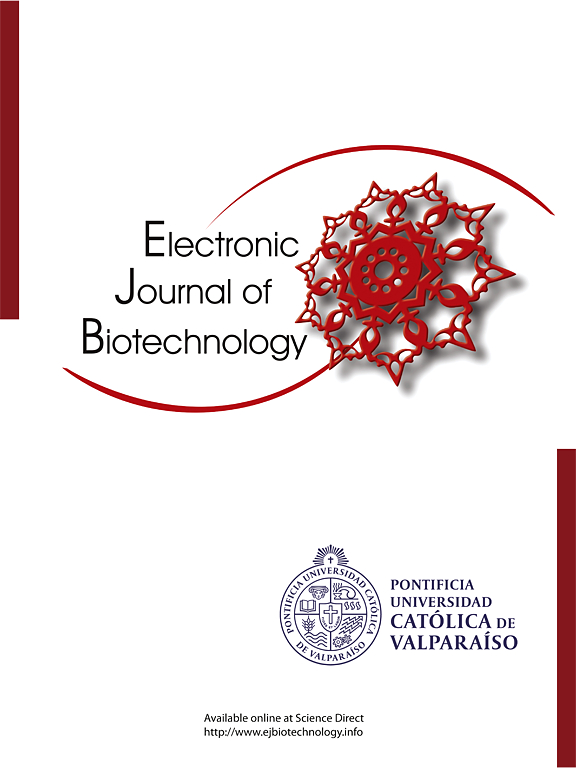Octoploid blueberry development for drought tolerance: A combined approach of in vitro polyploidization and somatic organogenesis
IF 2.5
4区 生物学
Q3 BIOTECHNOLOGY & APPLIED MICROBIOLOGY
引用次数: 0
Abstract
Background
The blueberry (Vaccinium spp.) is a fruit commercially known for its high quality and health benefits, particularly for its bioactive antioxidant compounds, which are important in the medical field. However, factors such as genotype, stage of fruit ripening and environmental conditions impact the biosynthesis of bioactive compounds in the berry, as well as their yield and cultivation costs. In Mexico, particularly in the state of Sinaloa, extreme climatic conditions limit the cultivation of blueberry and highlight the need for the development of new varieties with low chilling requirements and tolerance to drought conditions.
Results
Through the combined use of somatic organogenesis and in vitro polyploidization, genetic variability was promoted in the commercial blueberry plant variety “Biloxi”. To achieve this purpose, blueberry microcuttings were treated with colchicine (0.02%) for six hours for 2, 4, 6 and 8 consecutive days and induced to form shoots in vitro with Zeatin (1 mg·L−1). Out of 304 generated plants, 36 showed lower stomatal density and 9 lines showed higher stomatal density. Likewise, 5 and 49 lines presented lower and larger stomatal sizes, respectively. In 9 lines, a higher chlorophyll content was found (10% to 200%) compared to the control treatment. Ploidy analysis using flow cytometry showed the successful generation of four octoploid blueberry plants.
Conclusions
This work successfully generated new octoploid blueberry plants. Currently, all the lines that presented histological, biochemical and/or genetic modifications are being evaluated under greenhouse conditions for fruit quality and drought tolerance.
How to cite: Heraldez AA, Peñuelas SV, Jarpa-Tauler G, et al. Octoploid blueberry development for drought tolerance: A combined approach of in vitro polyploidization and somatic organogenesis. Electron J Biotechnol 2025;75. https://doi.org/10.1016/j.ejbt.2025.01.004.

八倍体蓝莓的抗旱发育:体外多倍体和体细胞器官发生相结合的方法
蓝莓(Vaccinium spp.)是一种以其高品质和健康益处而闻名的水果,特别是其生物活性抗氧化化合物,这在医学领域很重要。然而,基因型、果实成熟阶段和环境条件等因素影响着浆果中生物活性化合物的生物合成,以及它们的产量和栽培成本。在墨西哥,特别是在锡那罗亚州,极端的气候条件限制了蓝莓的种植,并突出了开发低低温要求和耐旱条件的新品种的必要性。结果通过体细胞器官发生和离体多倍体分化相结合的方法,促进了蓝莓商品品种“碧露”的遗传变异。为达到这一目的,用0.02%秋水仙碱连续2、4、6和8天处理蓝莓微扦插6小时,用玉米素(1 mg·L−1)诱导其离体成芽。304株植株中气孔密度较低的有36株,气孔密度较高的有9株。同样,5号系和49号系的气孔大小也分别较小和较大。其中9个品系的叶绿素含量高于对照处理(10% ~ 200%)。利用流式细胞术进行倍性分析,结果表明成功获得了4株八倍体蓝莓植株。结论成功地获得了八倍体蓝莓新植株。目前,所有表现出组织学、生化和/或遗传修饰的品系正在温室条件下进行果实品质和耐旱性评价。引用方式:Heraldez AA, Peñuelas SV, Jarpa-Tauler G,等。八倍体蓝莓的抗旱发育:体外多倍体和体细胞器官发生相结合的方法。中国生物医学工程学报(英文版);2009;16。https://doi.org/10.1016/j.ejbt.2025.01.004。
本文章由计算机程序翻译,如有差异,请以英文原文为准。
求助全文
约1分钟内获得全文
求助全文
来源期刊

Electronic Journal of Biotechnology
工程技术-生物工程与应用微生物
CiteScore
5.60
自引率
0.00%
发文量
50
审稿时长
2 months
期刊介绍:
Electronic Journal of Biotechnology is an international scientific electronic journal, which publishes papers from all areas related to Biotechnology. It covers from molecular biology and the chemistry of biological processes to aquatic and earth environmental aspects, computational applications, policy and ethical issues directly related to Biotechnology.
The journal provides an effective way to publish research and review articles and short communications, video material, animation sequences and 3D are also accepted to support and enhance articles. The articles will be examined by a scientific committee and anonymous evaluators and published every two months in HTML and PDF formats (January 15th , March 15th, May 15th, July 15th, September 15th, November 15th).
The following areas are covered in the Journal:
• Animal Biotechnology
• Biofilms
• Bioinformatics
• Biomedicine
• Biopolicies of International Cooperation
• Biosafety
• Biotechnology Industry
• Biotechnology of Human Disorders
• Chemical Engineering
• Environmental Biotechnology
• Food Biotechnology
• Marine Biotechnology
• Microbial Biotechnology
• Molecular Biology and Genetics
•Nanobiotechnology
• Omics
• Plant Biotechnology
• Process Biotechnology
• Process Chemistry and Technology
• Tissue Engineering
 求助内容:
求助内容: 应助结果提醒方式:
应助结果提醒方式:


